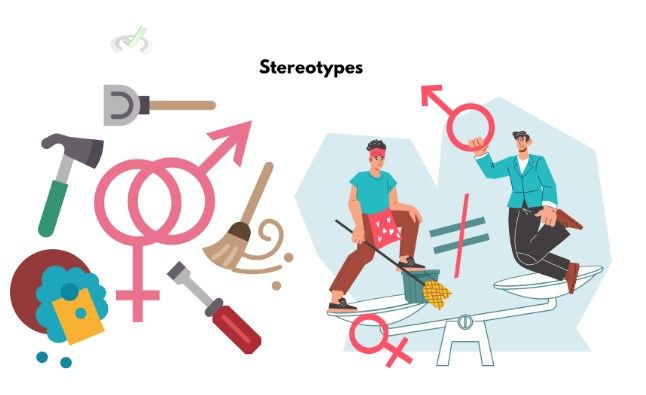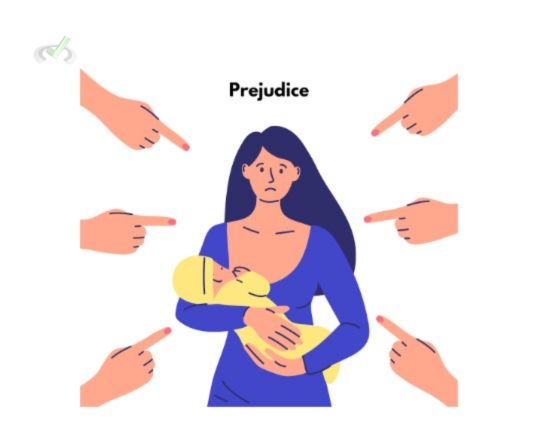Our attitudes shape how we see and treat others. In sociology, understanding the effect of attitude on stereotypes, prejudice, and discrimination helps us see how our thoughts and feelings can influence our actions. Let’s explore these concepts and their connections.
I. Understanding Attitude
Attitude is a settled way of thinking or feeling about something. It affects how we behave toward others and situations. Attitudes can be positive or negative and often influence our experiences and social environment.
Components of Attitude
- Cognitive Component: This involves beliefs or thoughts. For example, believing that all older adults are bad drivers because you've seen a few older drivers struggle.
- Affective Component: This involves feelings or emotions. For example, you may feel anxious when meeting someone from a different culture because you are not used to interacting with them.
- Behavioral Component: This involves acting based on our beliefs and feelings. For example, avoiding someone because of their race is influenced by negative stereotypes.
II. Stereotypes
Stereotypes are oversimplified ideas about a group of people. They are often based on limited information and can be positive or negative.

Formation of Stereotypes
- Social Categorization: We categorize people into groups to simplify our social world. This means we often judge people based on their race, gender, or age because it helps us make quick decisions. For example, you might assume a teenager is tech-savvy.
- Illusory Correlation: We sometimes see a connection between two things that aren't really related. For example, if you meet a few unfriendly people from a particular city, you might believe everyone from that city is unfriendly, even though this isn't true.
Effects of Stereotypes
- Positive Stereotypes: These can lead to favorable treatment and create unrealistic expectations. For instance, assuming all Asians are good at math might put unfair pressure on someone who isn’t.
- Negative Stereotypes: Can result in unfair treatment and prejudice. For example, thinking all young people are lazy can lead to older people not respecting them.
III. Prejudice
Prejudice is a preconceived opinion not based on reason or actual experience. It involves making judgments about people based on stereotypes.

Types of Prejudice
- Explicit Prejudice: Clearly expressed and consciously held. For example, openly saying you dislike a certain ethnic group because of negative beliefs about them.
- Implicit Prejudice: Unconscious and automatic. For example, feeling uncomfortable around someone without knowing why can be due to internalized stereotypes.
Causes of Prejudice
- Socialization: Learning prejudiced views from family, friends, and media. For instance, you might adopt these views if your family always talks negatively about a certain group.
- In-group Favoritism is the tendency to Prefer people who are like us. This can happen because we feel safer and more comfortable with people who are similar to us.
- Scapegoating: Blaming a group for problems they didn't cause. For example, some might blame immigrants for job shortages during tough economic times, even if it's not true.
IV. Discrimination
Discrimination is the unfair treatment of individuals based on their group membership. It is the behavior that stems from prejudice.

Types of Discrimination
- Individual Discrimination: One person discriminates against another. For example, a landlord refuses to rent to someone because of their race.
- Institutional Discrimination: Discrimination by organizations or institutions. For example, a company’s hiring practices exclude certain groups. This can happen when policies or practices, even if not intended to discriminate, result in unequal treatment.
Effects of Discrimination
- Psychological Impact: This can lead to stress, anxiety, and low self-esteem. For example, being constantly mistreated can make someone feel worthless.
- Social Impact: This can lead to segregation and social tension. When groups are kept apart, misunderstandings and conflicts can increase.
- Economic Impact: Discrimination in hiring limits opportunities for education and employment. For instance, if a group is discriminated against in hiring, they may have different job opportunities than others.
V. Factors Influencing Attitude
Several factors influence how our attitudes shape stereotypes, prejudice, and discrimination.
Social Influence
- Family: Our family's attitudes can shape our own. For example, if your parents treat everyone respectfully, you will likely do the same.
- Peers: Friends and social groups influence our attitudes. If your friends hold certain beliefs, you might adopt them to fit in.
- Media: News, movies, and social media can shape our views. For instance, if movies always show certain groups negatively, we might start to believe those portrayals.
Personal Experiences
Personal experiences with individuals from different groups can challenge or reinforce our stereotypes and prejudices. For example, making friends with someone from a group you had negative beliefs about can change your attitude.
Education
Learning about different cultures and perspectives can reduce prejudice and discrimination. For example, studying history and understanding the struggles of other groups can make us more empathetic.
VI. Bridge/Overlap
Understanding the effect of attitude on stereotypes, prejudice, and discrimination connects to broader topics in sociology and beyond.
Social Identity
Our attitudes are part of our social identity, influencing how we see ourselves and others. Social identity theory explains that we define ourselves by group memberships, such as nationality, religion, or school. This theory helps explain group behavior and is relevant to the MCAT.
Mental Health
Prejudice and discrimination can affect mental health. Understanding these concepts helps in creating supportive environments. Positive social support can improve well-being, while negative experiences can cause stress and anxiety. Mental health issues are studied in sociology and psychology, making this relevant for the MCAT.
Conflict Resolution
Knowing how attitudes shape behaviors can aid in resolving conflicts and promoting harmony. Specific methods, such as mediation and negotiation, address conflicts. This connects with understanding social interactions and group dynamics, which are important topics on the MCAT.
Policy Making
Policies aimed at reducing discrimination rely on understanding these sociological concepts. For example, affirmative action policies are designed to provide equal opportunities in education and employment. Understanding the effects of prejudice and discrimination is crucial for creating effective policies.
VII. Wrap Up/Key Terms
Let's summarize the key points:
- Attitude: A settled way of thinking or feeling.
- Stereotype: An oversimplified idea about a group of people.
- Prejudice: A preconceived opinion not based on reason or experience.
- Discrimination: Unfair treatment based on group membership.
- Social Categorization: Grouping people to simplify our social world.
- Illusory Correlation: Seeing a connection between unrelated things.
- In-group Favoritism: Preferring people who are like us.
- Scapegoating: Blaming a group for problems they didn't cause.
VIII. Practice
Test your understanding with these questions:
Sample Practice Question 1
What is a stereotype?
A. An oversimplified idea about a group of people.B. A preconceived opinion not based on reason.
C. Unfair treatment based on group membership.
D. A settled way of thinking or feeling.
Ans. A
Stereotypes are oversimplified ideas about groups of people, often based on limited information.
Sample Practice Question 2
What type of discrimination involves an organization's unfair practices?
A. Individual discrimination.
B. Institutional discrimination.
C. Explicit prejudice.
D. Implicit prejudice.
Ans. B
Institutional discrimination occurs when organizations or institutions have unfair practices that affect certain groups.







 To help you achieve your goal MCAT score, we take turns hosting these
To help you achieve your goal MCAT score, we take turns hosting these 





















 reviews on TrustPilot
reviews on TrustPilot